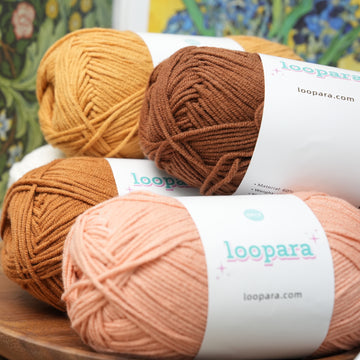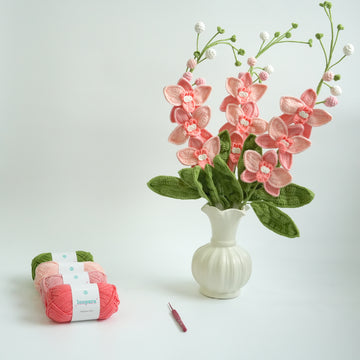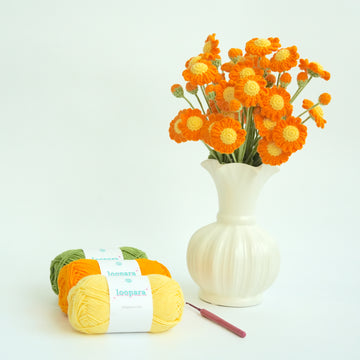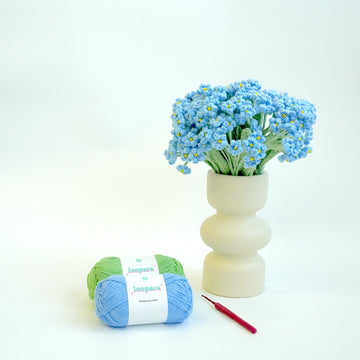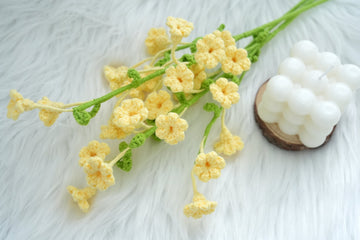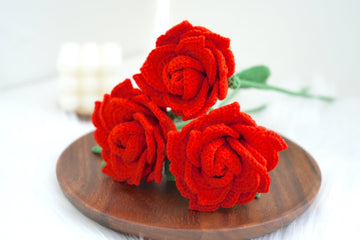Crochet toys can be a delightful and cost-effective way to entertain your feline friends, but their safety depends largely on how they're made and used.
This guide will explore the benefits and risks of crochet toys for cats, along with essential safety considerations and best practices for both crafters and cat owners.
Why Cats Love Crochet Toys?
Cats are naturally drawn to crochet toys for several reasons. The texture of yarn mimics the feel of prey, while the woven patterns create an interesting tactile experience that cats find irresistible.
Additionally, handmade crochet toys can be customized to incorporate your cat's preferred play styles, whether they enjoy batting around small objects or wrestling with larger ones.
Safety Considerations
1. How to Choose Yarn for Crochet Cat Toy?
The choice of yarn is crucial for cat toy safety. Natural fibers like cotton and wool are generally safer than synthetic materials, as they're less likely to cause harm if ingested in small amounts.
However, wool may not be the best choice for washing, and some cats might be allergic to it. Cotton is typically the safest option, being both durable and washable.
For specific recommendations, Loopara Milk Cotton Yarn is an excellent choice, as it combines durability with a soft texture that cats love, while being machine washable and resistant to fraying.
When selecting yarn, it's important to avoid certain characteristics that could pose risks to your cat. Metallic threads or glitter components can be dangerous if ingested, while loose fibers that easily separate might become choking hazards.
Mohair and other yarns that shed extensively should also be avoided, as should yarns treated with toxic dyes or treatments.
2. Construction Methods
The way a crochet toy is made significantly impacts its safety. Tight stitches are essential to prevent cats from getting their claws caught or accessing the stuffing inside.
Double or triple crochet stitches typically create a firmer fabric than single crochet, though the latter provides tighter holes.
For optimal safety, use smaller hooks than recommended for the yarn to create tighter stitches.
Working in continuous rounds helps avoid seams that might come apart, while reinforcing high-stress areas ensures greater durability. All ends should be thoroughly secured inside the toy to prevent unraveling.
Also Read: 44 Different Types Of Crochet Stitches
3. Stuffing Choices
The filling material is as important as the outer yarn. The safest stuffing options include polyester fiberfill specifically rated for toy making and organic cotton stuffing.
If you want to incorporate catnip or silvervine, ensure it's enclosed in a secure inner pouch to prevent spillage and potential ingestion of large amounts.
Some materials should never be used as stuffing for cat toys. These include foam pieces that could become choking hazards, plastic pellets that might leak, bean bag filling, and random fabric scraps from old clothing.
These materials can pose serious risks if your cat manages to access them.
4. Size Considerations
The size of the crochet toy should be appropriate for your cat. The toy should be larger than your cat's mouth to prevent swallowing, yet small enough to bat around comfortably.
In households with multiple cats, consider making toys large enough to prevent possessive behavior while still being manageable for play.
Risks and How to Get Rid of Them
1. Ingestion Hazards
Cats may attempt to eat parts of their toys, which can lead to serious health issues. Regular inspection of toys for damage is essential, and any loose threads should be removed immediately.
When toys show signs of wear, they should be replaced promptly. It's also important to supervise play with new toys until you're confident in their durability.
2. Entanglement Issues
Loose strings or yarn can create dangerous situations by wrapping around a cat's tongue, legs, or neck. The safest approach is to create compact, self-contained toys without hanging strings or tassels.
Any loose ends that develop should be trimmed immediately, and toys with exposed strings should be removed from play.
3. Choking Risks
To prevent choking hazards, avoid incorporating buttons, bells, or other small attachments into your crochet toys.
If decorative elements are desired, secure them with multiple anchor points or, better yet, use embroidery for faces and details instead of attached pieces. Always test all parts for security before giving the toy to your cat.
Pro Tips for Safe Play
Initial supervision is crucial when introducing a new crochet toy. Watch how your cat interacts with it, identify any potential safety issues, and ensure the toy holds up to your cat's play style. This observation period also allows you to monitor for any allergic reactions or adverse behaviors.
Regular maintenance helps ensure ongoing safety. Toys should be washed monthly or when visibly dirty, with careful inspection before and after washing. Remove toys that show signs of wear, and rotate toys to prevent boredom and extend their life.
Proper storage is also important for maintaining toy safety and longevity. Keep unused toys in a closed container in a cool, dry place, away from direct sunlight. If you have catnip-filled toys, store them separately to maintain their effectiveness and prevent the scent from transferring to other toys.
Here are more tips on reddit.
Making Your Own Cat-Safe Crochet Toys
When crafting toys for your cats, choose patterns specifically designed for cat toys, as these typically incorporate necessary safety features.
Look for designs that use simple, sturdy construction methods and include reinforcement techniques. The pattern should provide specific guidance on size and materials.
Before giving a new toy to your cat, test it thoroughly. Tug firmly on all parts to check durability, verify there are no loose ends or weak spots, and ensure the size is appropriate and stuffing is secure.
When to Replace Crochet Toys
A toy should be retired when it shows visible wear or damage to the outer surface, exposed stuffing or internal components, or loose or unraveling stitches.
Changes in shape or structure, strong odors that don't wash out, and visible dirt or stains that won't clean are also signs that it's time for replacement.
Conclusion
Crochet toys can be safe and entertaining for cats when properly made and maintained. The key is using appropriate materials, following safe construction methods, and maintaining regular supervision and maintenance. By following these guidelines, you can provide your feline friend with engaging, safe playthings that enhance their environmental enrichment while maintaining their safety.
Remember that every cat is different, and what works safely for one might not be appropriate for another. Always observe your cat's interaction with new toys and adjust accordingly. When in doubt, consult with your veterinarian about specific concerns regarding toy safety for your cat's individual needs and behaviors.


